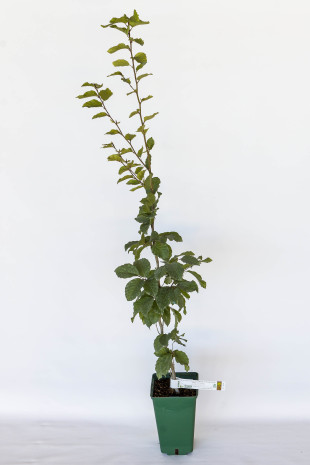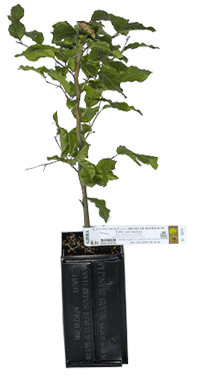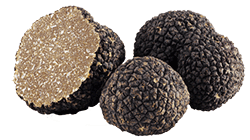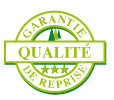


 Young truffle plant of beech (Fagus sylvatica) mycorhized with tuber uncinatum. Beech intended for the production of Burgundy truffles. Truffle beech plant aged from 1 to 3 years, produced in France with certified quality under INRAE control.
Young truffle plant of beech (Fagus sylvatica) mycorhized with tuber uncinatum. Beech intended for the production of Burgundy truffles. Truffle beech plant aged from 1 to 3 years, produced in France with certified quality under INRAE control.
Do you want to grow Burgundy truffles and are you looking for the most suitable plants for this production? Or maybe you simply want to add new plants to your truffle orchard that will produce this famous autumn truffle appreciated for its taste? Thanks to its excellent truffle-growing abilities, the common beech could well satisfy your needs and appear as the adequate truffle plant to support and increase the production of your truffle orchard !
 This common beech truffle plant is obtained after controlled and certified mycorrhization of a common beech tree (Fagus sylvatica) with Burgundy truffle spores (Tuber uncinatum). The tree obtained is ready to be planted in your truffle field. It will produce its first truffles within 6 to 7 years.
This common beech truffle plant is obtained after controlled and certified mycorrhization of a common beech tree (Fagus sylvatica) with Burgundy truffle spores (Tuber uncinatum). The tree obtained is ready to be planted in your truffle field. It will produce its first truffles within 6 to 7 years.
In order to meet your expectations, our common beech truffle plants, mycorhized with the Burgundy truffle, are available in 4 sizes of cups:
- in anti-chignon® R430 cup of 0.43 liters
- in anti-chignon® R600 cup of 0.6 liters
- in anti-chignon® R1.5L cup of 1.5 liters
- in R3L container (volume of 3 liters)
Due to its characteristics, the common beech (Fagus sylvatica) is one of the many forest species that can live in symbiosis with the Burgundy truffle. This deciduous tree has a root system covering a vast area, which allows it to cope with drought or poor soil. It likes temperate climates, both in the plains and in medium mountains (up to 1500 m). If it appreciates particularly the acid and well drained soils, it manages to develop on thin calcareous grounds. Its dense foliage provides shade and humidity, two elements favorable to the cultivation of Tuber uncinatum.
 This is likely the most common edible truffle variety in Europe. This autumn truffle is distinguished by its black exterior (peridium). Inside, the flesh is dark brown. And it is distinguished by its very present white veins. The Burgundy truffle is an edible mushroom prized for its delicate flavors. As its vernacular name suggests, the Burgundy truffle was historically found mainly in east-central France. While it has since spread very widely well beyond this region, in France, Burgundy, Champagne, and Lorraine and Alsace remain the regions favored by Tuber uncinatum.
This is likely the most common edible truffle variety in Europe. This autumn truffle is distinguished by its black exterior (peridium). Inside, the flesh is dark brown. And it is distinguished by its very present white veins. The Burgundy truffle is an edible mushroom prized for its delicate flavors. As its vernacular name suggests, the Burgundy truffle was historically found mainly in east-central France. While it has since spread very widely well beyond this region, in France, Burgundy, Champagne, and Lorraine and Alsace remain the regions favored by Tuber uncinatum.
Our truffle beeches plants are produced in our laboratories under the control and license of INRAE. These plants are then pampered for many months in our nurseries. Quality plants, carefully selected, it is the guarantee to obtain a good yield after only a few years.
 The plants raised in ROBIN ANTI-CHIGNON® buckets are subject to a guarantee of recovery in the event of failure to recover more than 20% of the plants delivered. Under this guarantee, the seller undertakes to replace free of charge the defective plants during the season following the actual observation by the seller of the defective delivered plants.
The plants raised in ROBIN ANTI-CHIGNON® buckets are subject to a guarantee of recovery in the event of failure to recover more than 20% of the plants delivered. Under this guarantee, the seller undertakes to replace free of charge the defective plants during the season following the actual observation by the seller of the defective delivered plants.